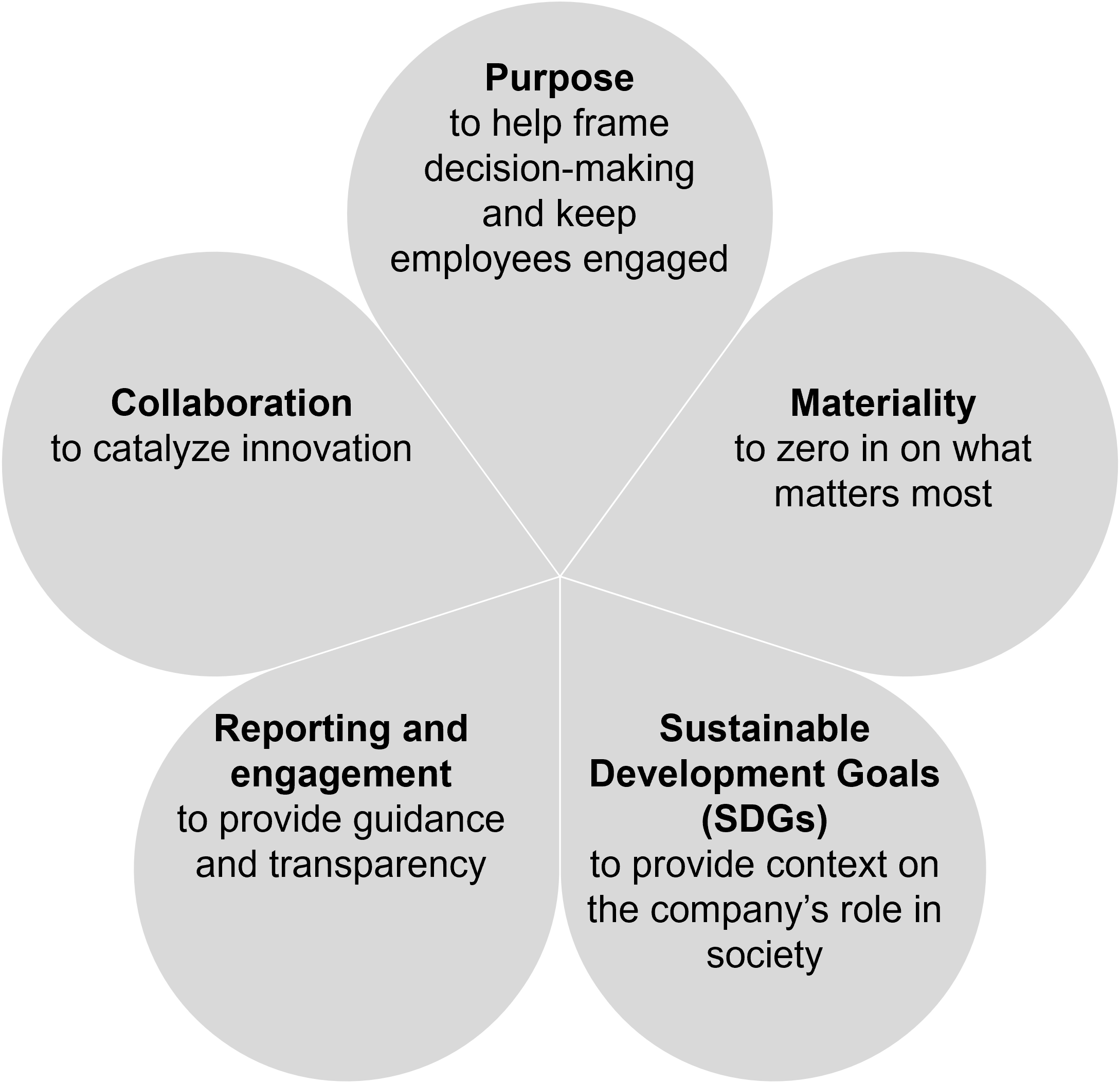Insights for What’s Ahead
- Even with recession risks high, governments and financial markets are not dropping sustainability as a regulatory or investment focus, but in fact are placing it higher on their agenda. They are ramping up their focus on sustainability in the face of energy price shocks, supply chain disruption, and increasing extreme weather events. Companies that go against this trend will lose opportunities for investment and funding and may not emerge as strong as their competitors in the long run. They may also face future regulatory compliance costs.
- The time to enhance and strengthen sustainability strategies is now. Eco-conscious operational efficiency can result in better use of scarce resources and a reduction in energy consumption, both of which contribute to the bottom line and help companies mitigate future price crunches in materials and energy. Companies should also take this opportunity to identify core and material issues in their sustainability strategy and focus their resources on them.
- Sustainability, corporate purpose, and long-term value are inextricably linked. An economic downturn is a risk that all businesses face. Research has shown that companies that focus on the “why” of weaving sustainability into their core businesses are likely to be less affected by recession. Studies highlighting lessons in sustainability from previous downturns have demonstrated that companies with robust sustainability strategies proved to be more resilient and fared far better than those that focused only on profit maximization.
Virtually every company faces six major challenges when it comes to sustainability.[1] Each company must determine:
- Which issues matter;
- How to integrate sustainability into business strategy and operations;
- How to set and reward goals;
- How to organize for success at the board and management levels;
- How to tell its sustainability story to multiple stakeholders; and
- How to deal with the ESG industry—the three Rs of regulators, reporting frameworks, and rating agencies.
These ongoing challenges evolve as both stakeholder expectations and the company’s business change, and sustainability programs mature as the company inevitably learns from successes and failures.
When ramping up strategies, businesses should first ensure that their sustainability priorities are firmly linked to their mission, purpose, and values.
A company's mission is what it does (and for whom); its purpose is why it exists; and its values are core pillars of how it behaves—that is, its culture. These are interrelated and interdependent concepts: a company’s purpose (why it exists) does not mean much without understanding its mission (what it does).
In shifting a company’s culture, it is important to have a consensus on all the above topics, as well as a shared sense of urgency.[2] If the resultant sustainability strategy, based on such consensus, is coherent and believable for employees, customers, and the supply chain, it will help guide the company through challenging times. For example, a sustainability strategy may help avoid greenwashing and the resulting reputational damage by reducing the chances that a company will react to crises with spur-of-the-moment decisions that are inconsistent with how it acts in more stable times. At the same time, adopting and articulating a purpose requires a high level of commitment and sufficient resources to develop and implement effectively. While it can provide an important guide to decision-making, it does not resolve many thorny trade-offs that will need to be made. And importantly, purpose should authentically represent the company’s business and values; it should go beyond nicely crafted words.[3]
Companies may well feel overwhelmed by the volume of environmental, social & governance (ESG) issues they are being asked to deal with. However, rather than cutting these short in a knee-jerk reaction, they should undertake an analysis to identify the issues that are most material to the company and where the company can have the greatest impact.[4] This will allow the company to focus resources and hone strategies. An effective sustainability strategy is not about addressing the long list of potential sustainability issues. Instead, companies need to identify and understand the sustainability issues that are most material to them and their stakeholders.[5]
Five Ways a Sustainability Strategy Provides Clarity in a Time of Crisis[6]
These key elements of sustainability strategy give companies an edge during the recovery phase: purpose, materiality, reporting and engagement, Sustainable Development Goals, and collaboration.

Source: The Conference Board, 2022
Once all stakeholders understand the direction the company is taking, it can develop a flexible route to achieve it. This is better than a fixed plan that is reviewed at predefined periods. A set of scenarios can map out changes in direction if needed, allowing the company to make quick decisions and move with agility as disruption occurs—temporary deviations from this direction will not steer the company away from its mission completely.[7]
Achieving transformations for a sustainable and inclusive world is not straightforward. Business leaders will have to manage multiple interconnected priorities in a fast-changing world. Businesses will chart their own journeys to sustainability depending on their ambitions, culture, and growth appetite. Businesses that successfully integrate the sustainability paradigm are not only better able to sustain business growth, but also able to build a robust foundation and capabilities for long-term competitive advantage and success.[8]
[3] Singer, Purpose-Driven Companies.

